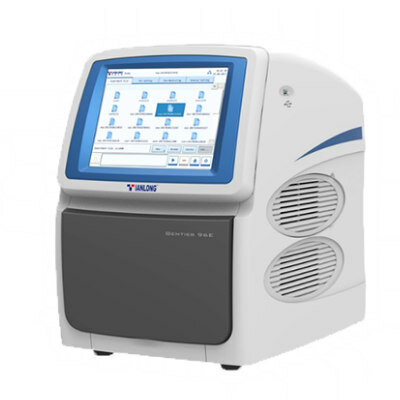Treatment Benefits Assessed for Breast Cancer Patients
By LabMedica International staff writers
Posted on 06 Jun 2011
The number of circulating tumor cells (CTCs) in the blood can be enumerated and is an effective predictor to assess treatment benefit for patients with metastatic breast cancer. Posted on 06 Jun 2011
A new analysis substantiates the utility of the CTC test, which counts the number of CTCs in the blood. CTC results at or above the threshold of five are reliably associated with clinical and/or radiographic evidence of worsening disease.
Teams from institutions around the world, working with scientists at Georgetown University Medical Center (GUMC; Washington, DC, USA) contributed blinded data to create a pooled dataset of 841 patients. The GUMC group culled data from peer-reviewed published studies, all of which utilized the CellSearch technology. This method employs immunomagnetic sample enrichment using antibodies targeting epithelial cell adhesion molecule (EpCAM) and cell labeling with fluorescent nucleic acid dye. Epithelial cells are distinguished from leukocytes using fluorescent labeled monoclonal antibodies specific for leukocytes' common antigen, cluster of differentiation 45 (CD-45) and epithelial cells' cytokeratins 8, 18, and 19.
The large sample size confirmed the findings from other studies that indicate a CTC count of five or more is associated with disease progression. Importantly, the predictive value of CTCs was not affected by treatment type, such as chemotherapy, endocrine therapy, biologic therapy, or tumor type, such as hormone receptor positive/negative, Human Epidermal growth factor Receptor 2 (HER2) positive/negative, or sites of disease involvement. CTC results at or above the threshold of five are reliably associated with clinical and/or radiographic evidence of worsening disease, strengthening considerations for a change in therapy with the goal of improving long-term patient outcomes.
Minetta Liu, MD, lead investigator of the new analysis, said, "Using a blood test to count CTCs in addition to our existing tools for disease monitoring might improve our ability to appropriately treat patients and maximize their quality of life. When a patient with metastatic breast cancer feels well and looks well, has had normal recent scans and CTC results that are consistently less than five, we feel more confident in her current treatment plan and may delay repeat imaging studies in favor of the less-invasive CTC blood test". The CellSearch technology used is a product of Veridex, LLC (Raritan, NJ, USA), a Johnson and Johnson company). The study will be presented during a poster session on June 6, 2011, at the annual meeting of the American Society of Clinical Oncology in Chicago (IL, USA).
Related Links:
Georgetown University Medical Center
Veridex













